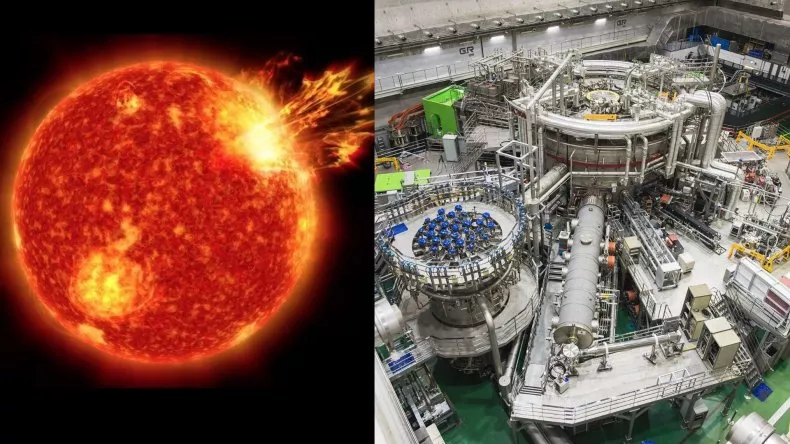South Korea’s ‘Artificial Sun’ KSTAR Reaches 100 Million Degrees Celsius

- 03 Apr 2024
Why is it in the News?
South Korean scientists have set a new world record for the length of time they sustained temperatures of 100 million degrees Celsius.
Key Highlights:
- The Korea Superconducting Tokamak Advanced Research (KSTAR) fusion reactor reached temperatures of 100 million Celsius for 48 seconds.
- Scientists hope to harness this unlimited energy.
- It is also significant that the KSTAR maintained the high confinement mode (H-mode) for over 100 seconds.
- H-mode is a stable plasma state.
- The earlier record of achieving this temperature was for 30 seconds which took place in 2021.
- The scientists at the Korea Institute of Fusion Energy (KFE) said they managed to extend the time by tweaking the process.
- They also used tungsten instead of carbon in the 'diverters', which extract heat and impurities produced by the fusion reaction.
- The International Thermonuclear Experimental Reactor in southern France has the world's biggest tokamak and what the scientists in South Korea achieve will help French scientists.
What is an Artificial Sun?
- An artificial sun typically refers to a device or facility designed to replicate some aspects of the nuclear fusion processes that occur naturally in stars like the Sun.
- These facilities aim to generate and sustain controlled nuclear fusion reactions, usually through the use of high temperatures, pressures, and magnetic fields.
- Scientists generally use a donut-shaped reactor called a tokamak in which hydrogen variants are heated to extraordinarily high temperatures to create a plasma.
- High temperatures and high-density plasmas are vital for the future of nuclear fusion reactors.
- This is called artificial Sun because it replicates the reaction of fusion taking place there and unleashes a massive amount of heat energy.
- The goal is to harness fusion energy as a potential future source of clean and abundant energy for various applications, including electricity generation.
What is Nuclear Fusion?
- Fusion is the reaction that makes the sun and other stars shine.
- It involves fusing hydrogen and other light elements to release massive power that experts in the field hope to harness for unlimited, zero-carbon electricity.
- In this reaction, two atoms of hydrogen or helium come together and fuse to unleash huge amounts of energy.
